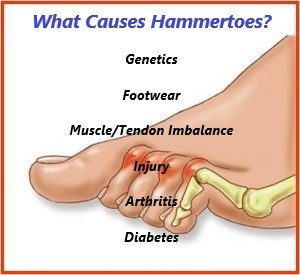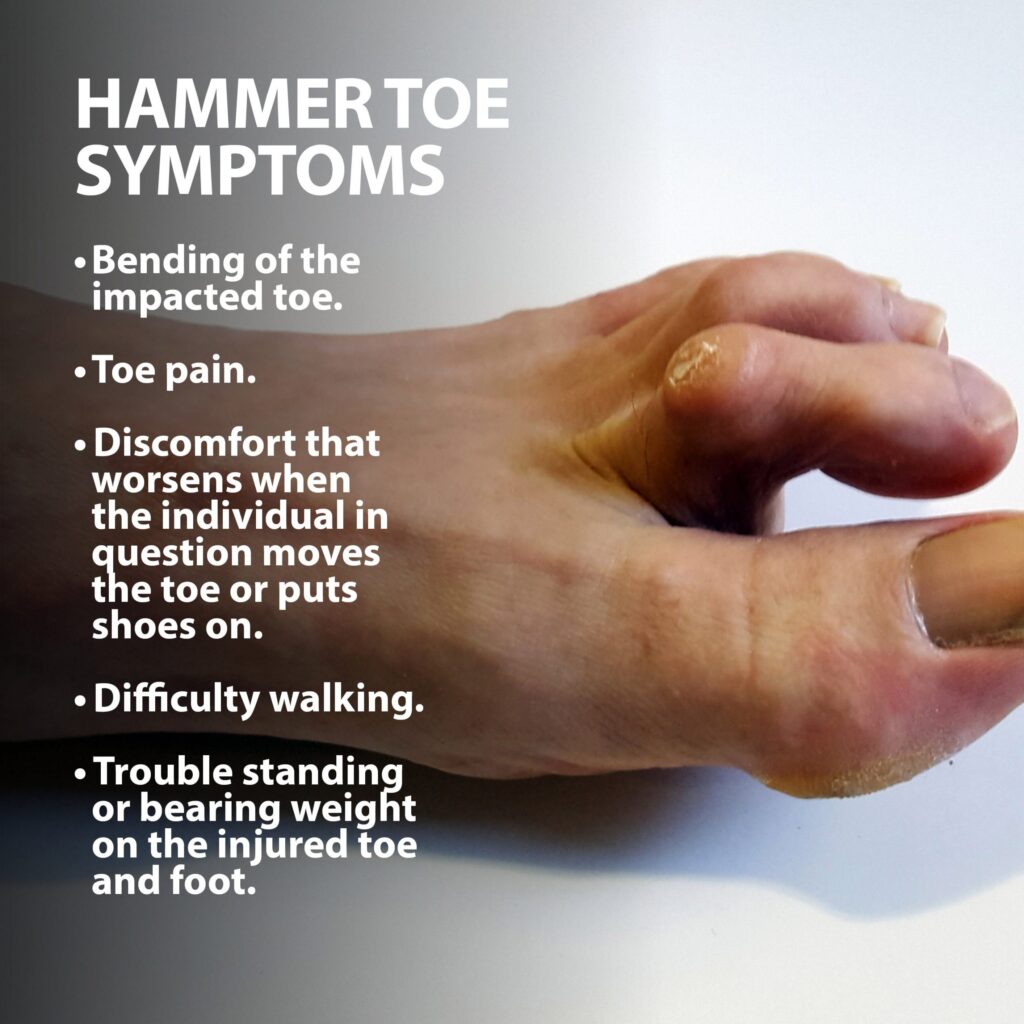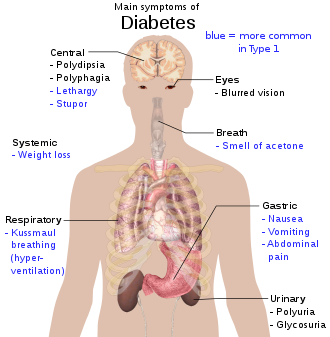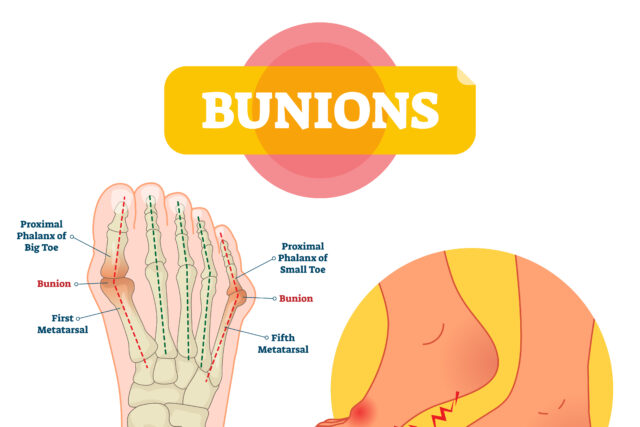Discover the ultimate guide to understanding hammertoes, including causes, symptoms, and effective treatments. Learn how to alleviate pain and regain foot health today!
Introduction
Hammertoes are more than just a foot issue; they’re a call for attention to our body’s needs and health. Characterized by an abnormal bend in one or more of the small toes, hammertoes signal an imbalance in the toe’s muscular and structural components. This guide delves deep into the causes, symptoms, and management strategies for hammertoes, offering insights and solutions for those affected by this common condition. Whether inherited or caused by unsuitable footwear, understanding hammertoes is the first step toward relief and recovery.
Table of Contents
What Causes Hammertoes?
Hammertoes are a common foot condition characterized by an abnormal bend in one or more of the small toes. This deformity arises from an imbalance in the toe’s muscular and structural components, leading to its distinctive curled appearance. Let’s delve into the primary causes and symptoms associated with hammertoes.

Genetics
A predisposition to hammertoes can be inherited, meaning if hammertoes or similar foot conditions run in your family, you may be more likely to develop them. This genetic influence often dictates the structural and functional aspects of your feet, increasing your susceptibility to this condition.
Footwear
The choice of footwear plays a crucial role in foot health. Shoes that are too tight, narrow, or those with high heels can push the toes into an unnatural, bent position. Over time, this can lead to a permanent deformity as the muscles and tendons in the toes adjust to this cramped position. Shoes lacking adequate toe room exacerbate the issue by applying constant pressure, leading to significant changes in foot structure.
Muscle/Tendon Imbalance
Hammertoes can also stem from an imbalance between the muscles that flex and extend the toe. When the muscles responsible for bending the toe overpower those that straighten it, the toe is pulled into a bent position. This imbalance may worsen due to aging, injuries, or other foot conditions, promoting the development of hammertoes.
Injury
Injuries such as toe fractures, dislocations, or severe sprains can disrupt the alignment of your toe and damage its muscular and tendon structure, predisposing it to a hammertoe deformity. The healing process might introduce scar tissue and stiffness, further encouraging the condition.
Arthritis
Joint diseases like osteoarthritis and rheumatoid arthritis can lead to hammertoes by altering the alignment and integrity of toe joints. The inflammation and joint damage characteristic of arthritis can push the toes out of alignment, making them prone to bending.
Diabetes
Diabetes can indirectly contribute to hammertoes by causing neuropathy, which impairs muscle function and leads to imbalances. Moreover, compromised blood flow from diabetes can slow injury healing, increasing the risk of foot deformities.
What Symptoms You Can Observe?

Visible Deformity
The hallmark of a hammertoe is the noticeable upward bend at the toe’s middle joint, making the toe curl downward. This visible deformity is a clear indication of a hammertoe.
Pain and Discomfort
Discomfort is common in two areas: the top of the bent toe, where it contacts the shoe, and the ball of the foot beneath the affected toe. This pain can be exacerbated by walking, standing, or wearing restrictive footwear.
Corns and Calluses
The friction from the toe rubbing against the shoe can lead to the formation of corns and calluses. These thickened skin patches serve as a protective response to pressure but can be painful and signify abnormal toe alignment.
Stiffness and Difficulty Moving the Toe
As a hammertoe progresses, you may experience increased stiffness and a reduction in toe movement. This stiffness can affect your walking and balance, indicating that the tendons and ligaments have become less flexible.
What Strategies You need to Follow?
Addressing hammertoes early and adopting appropriate management strategies are key to mitigating their impact and averting further complications. Here’s how you can manage this condition effectively:

Proper Footwear
Opt for shoes that offer a spacious toe box, lower heels, and features like adjustable straps or laces to minimize pressure on the toes and provide a comfortable fit.
Orthotic Devices
Consider using custom-fitted orthotics, recommended by a foot specialist, to evenly distribute foot pressure and lessen the burden on the affected toes. These devices can play a significant role in correcting foot posture and providing relief.
Exercises
Regularly performing exercises designed to stretch and strengthen the toe muscles can aid in rebalancing muscle forces and slowing down the deformity’s progression. These exercises can enhance toe flexibility and mobility.
Padding and Strapping
Using non-medicated pads or strapping can offer immediate relief by cushioning the affected toe and reducing discomfort. These measures can also help in keeping the toe in a more natural position and prevent further misalignment.
Surgical Intervention
For individuals experiencing severe discomfort or those with a rigid hammertoe deformity, surgical intervention might be the recommended course of action. Surgery aims to realign the toe and restore its functionality, especially when other treatments haven’t provided sufficient relief.
Frequently Asked Questions
Q: What are the main causes of hammertoes?
A: Hammertoes primarily result from genetic predispositions, improper footwear, muscle/tendon imbalance, injuries, arthritis, and complications from diabetes.
Q: How can I recognize hammertoe symptoms?
A: Look for visible deformities like an upward bend at the toe’s middle joint, pain and discomfort, corns and calluses from friction, and stiffness or difficulty moving the toe.
Q: What strategies can help manage hammertoes?
A: Effective management includes choosing the right footwear, using orthotic devices, performing toe exercises, applying padding and strapping, and considering surgical intervention for severe cases.
Q: Is surgery always necessary for hammertoes?
A: Surgery is generally recommended for severe discomfort or rigid hammertoe deformities when other treatments haven’t provided relief. It aims to realign and restore toe functionality.
Conclusion
Hammertoes don’t have to dictate the comfort and functionality of your feet. With the right knowledge and care strategies, managing and even overcoming this condition is entirely possible. From selecting appropriate footwear to engaging in targeted exercises and considering surgical options when necessary, there are multiple paths to alleviating the discomfort of hammertoes. Remember, early intervention is key to preventing further complications, so take the first step towards healthier feet today.











I am genuinely amazed by your keen analysis and stellar writing style. Your depth of knowledge shines through in every piece you write. It’s obvious that you spend considerable time into understanding your topics, and this effort pays off. Thanks for providing this valuable knowledge. Keep on enlightening us!